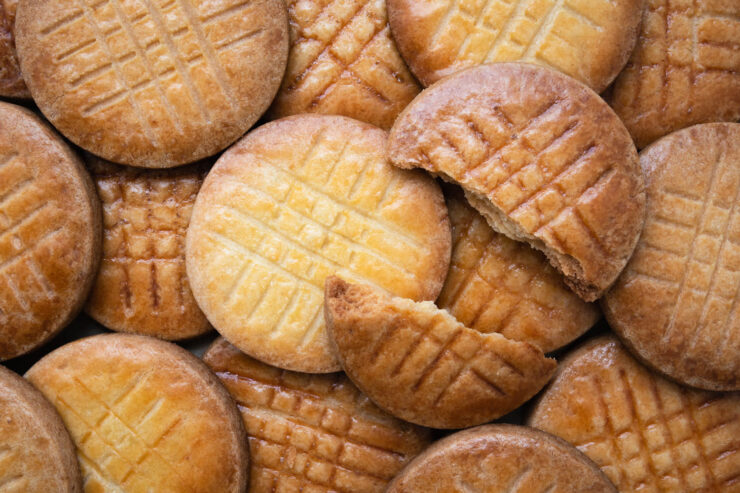
Sablés Bretons are French butter cookies from the region of Brittany. They’re crisp-crumbly and very buttery, similar to shortbread.
Sablé means “sand” in French, and the cookies get this name either from their consistency when blending the butter, flour, and sugar together, or from their short texture once baked.
Butter from Brittany
Bretagne is famous for its exceptional sea salt butter. Many of France’s best butter-based pastries originate from here, like kouign-amann (literally “butter bread”).
Salted butter was a delicious inevitability in Bretagne. France is the world’s largest consumer of butter and Brittany is France’s most important region for dairy. Bretagne alone produces about a quarter of France’s butter. Brittany is also famous for its sea salt harvested in the Guérande peninsula, where salt has been harvested since the Iron Age.
In France, butter is sold as: doux, or unsalted; demi-sel, or about .5% to 3% salt; or beurre salé, more than 3% salt and sometimes containing salt crystals. If you can find beurre salé from Brittany, that is the butter to use for these sablés. Otherwise, use the best unsalted, European-style butter you can find, along with fleur de sel or flaky sea salt.
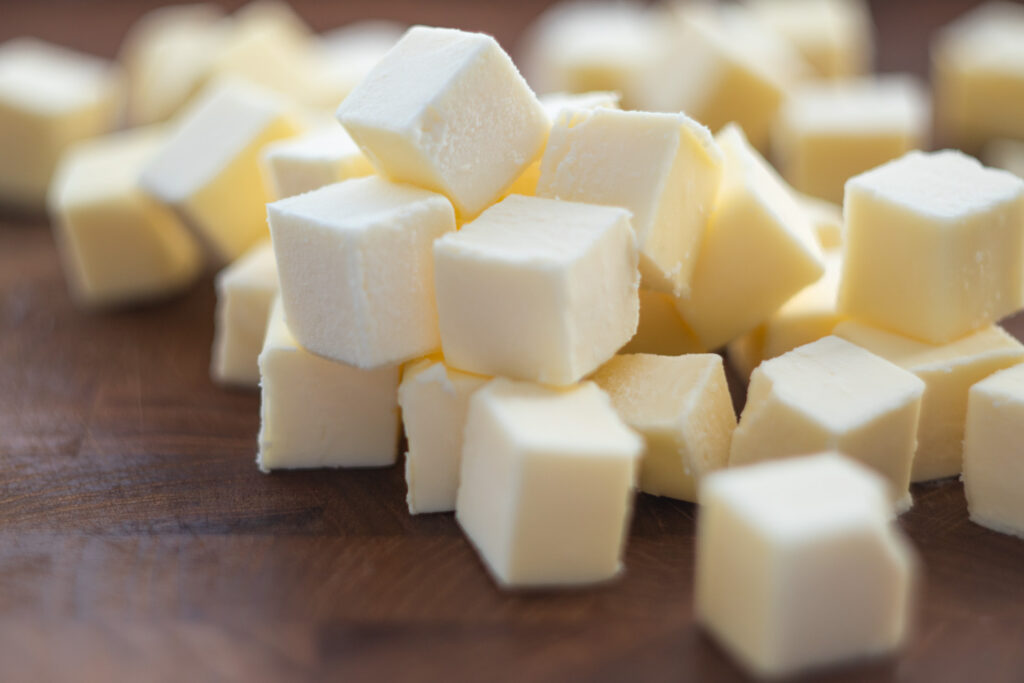
The History of Salted Breton Butter
Bretagne had maintained sovereignty even as the Kingdom of France expanded its rule. The Treaty of Sablé, a consequence of the Mad War in the late 15th century, required the approval of the French king to any marriage of the daughters of Francis II of Brittany. Nonetheless, his daughter, Anne of Brittany, married the Holy Roman Emperor, Maximilian I, without approval.
Because they had broken the treaty, Charles VIII of France ordered forces into Rennes and had the marriage cancelled. He eventually married her. But when he died without a child, Anne was forced to marry his heir, Louis XII. While Anne tried to preserve Breton independence, the two crowns were joined after her death.
An important privilege awarded to the region after joining France was Brittany’s exemption to the gabelle, or salt tax. King Philippe VI de Valois had created a state monopoly on salt and instituted a lofty and unpopular salt tax in 1343.
Because of this exemption, Breton was able to produce exceptional sea salt butter. The gabelle wasn’t fully abolished until 1946.
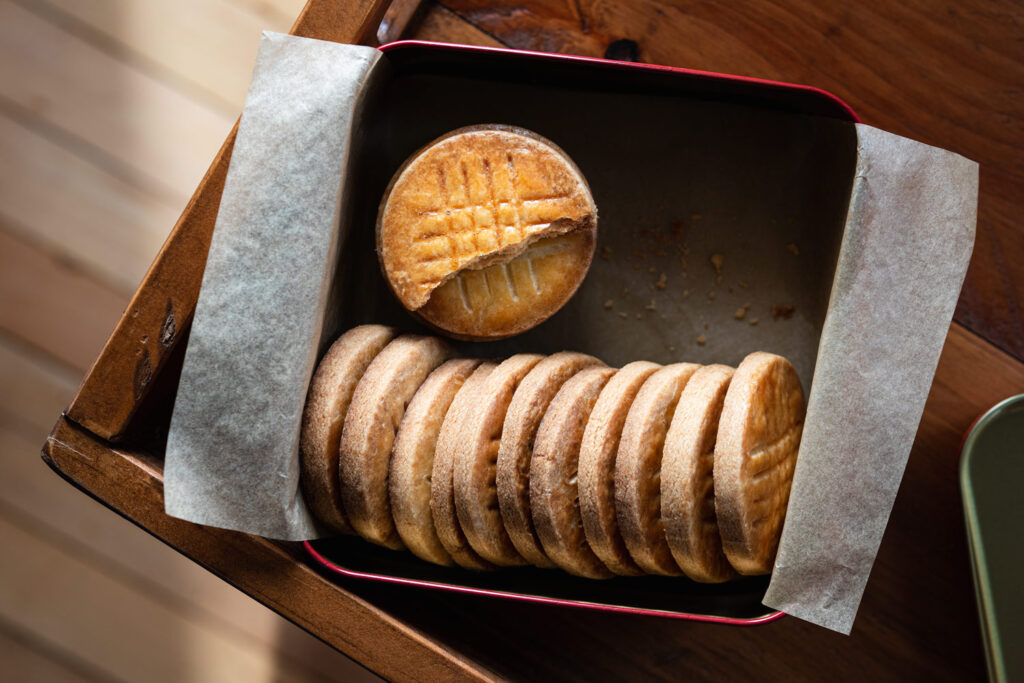
How to Make Sablés Bretons
The quality of the butter will make a difference in the taste and the texture. If you can’t get salted butter from Bretagne, you will want to use the best European-style butter you can find. The higher fat content in European-style butter is essential for the richness and crumbly texture of sablés. In the recipe below, I used unsalted butter and added fleur de sel.
The method for making sablés Bretons is actually rather simple. Softened butter is mixed directly with the flour, sugar, and salt, until it looks sandy and no large chunks of butter remain. Egg yolks are added to the flour mixture to bind the dough together. The dough is chilled before rolling and cutting out rounds. To get the characteristic pattern and shine, use the tines of a fork to create a crosshatch pattern on the top of each cookie and brush with egg wash before baking.
Sablés Bretons Baking Tips
- The mixing technique for making sablés is aptly called “sanding.” First, mix the butter with the flour mixture, allowing the fat in the butter to coat the flour. This prevents the gluten from developing, which would make a rubbery dough.
- Egg yolks are added to bind the dough together and contribute to the flavor, texture, and color of the sablé cookies.
- I prefer to use confectioners’ sugar because it dissolves easier and mixes faster. You may use an equal amount of granulated sugar by weight instead (100g or 1/2 cup).
- The recipe below assumes you don’t have beurre salé from Brittany. If you can procure it, absolutely use it and skip the salt in the recipe. Otherwise, use the best unsalted European-style butter you can find.
- If you can find Guérande sea salt, be sure to use that as it has the best flavor. Otherwise use fleur de sel or another flaky sea salt.
- This dough is delicate and can be very sticky if it gets too warm. To avoid mess and frustration, keep the dough cold and roll it between two sheets of parchment paper. If the dough warms up too much, put it back in the fridge for a few minutes.
- If the cookies stick to the parchment paper; use an offset spatula to carefully pry them from the paper and onto a lined baking sheet.
- Sablés Bretons are traditionally scored on the top with a crosshatch pattern. Keeping the dough cold will make this step much easier.
- Apply a light coat of egg-wash before baking for a shiny and golden cookie.
- Keep a watchful eye as they bake, they brown very quickly. The baking time will depend on the thickness of the cookie and the size of the cookie cutter.
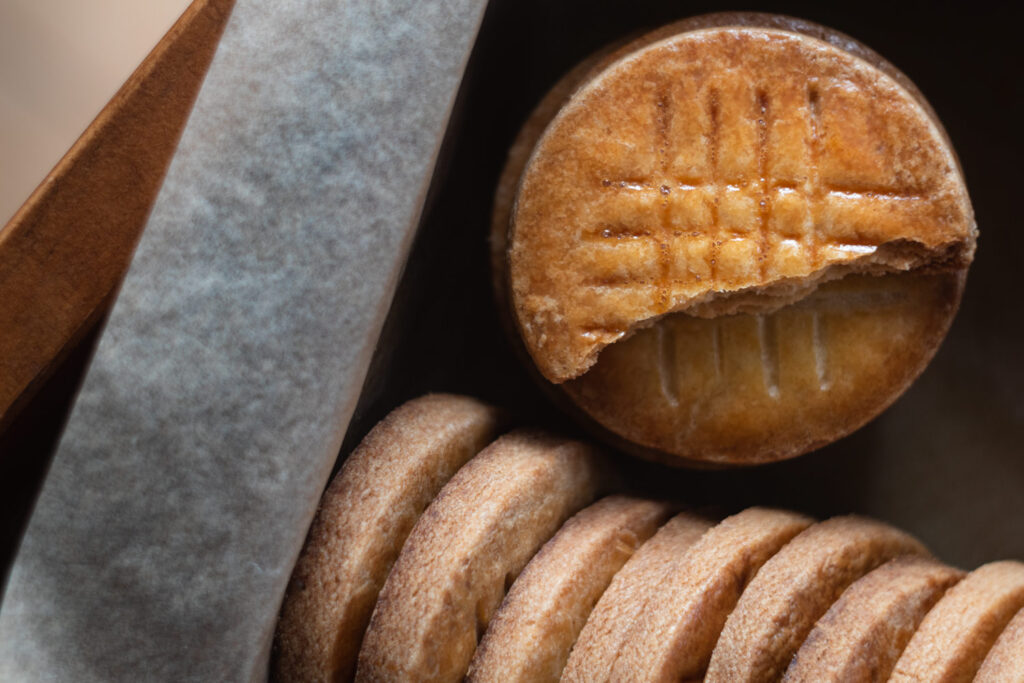
Ingredients:
Yields 30 cookies.
100g confectioners’ sugar
1 teaspoon sea salt
150g unsalted butter, softened
3 large egg yolks, room temperature
1 teaspoon vanilla extract
EGG WASH:
1 large egg
1 teaspoon water
1 cup confectioners’ sugar
1 teaspoon sea salt
2/3 cup unsalted butter, softened
3 large egg yolks, room temperature
1 teaspoon vanilla extract
EGG WASH:
1 large egg
1 teaspoon water
1. Combine the dry ingredients:
Place the flour, sugar, and sea salt in the bowl of a stand mixer with the paddle attachment. Mix on low speed until combined, about 30 seconds.
2. Mix in the butter:
Add the softened butter to the flour mixture and mix on low speed until crumbly or and no large chunks of butter remain, about 2 minutes. It should look almost like wet sand.
3. Add the egg yolk and vanilla:
Add the egg yolk and vanilla and mix on medium just until the ingredients come together into a smooth dough.
4. Chill the dough:
Scrape the dough out of the bowl and press it into a 1/2-inch-thick rectangle. Wrap the dough in plastic and refrigerate overnight.
5. Preheat the oven:
Preheat the oven to 160°C (325°F).
6. Roll and cut out the cookies:
Roll out the dough between two sheets of parchment paper to 1/8- to 1/4-inch thick (3-6mm). The dough can be quite sticky and the parchment paper prevents the dough from sticking to your work surface or rolling pin without adding too much flour.
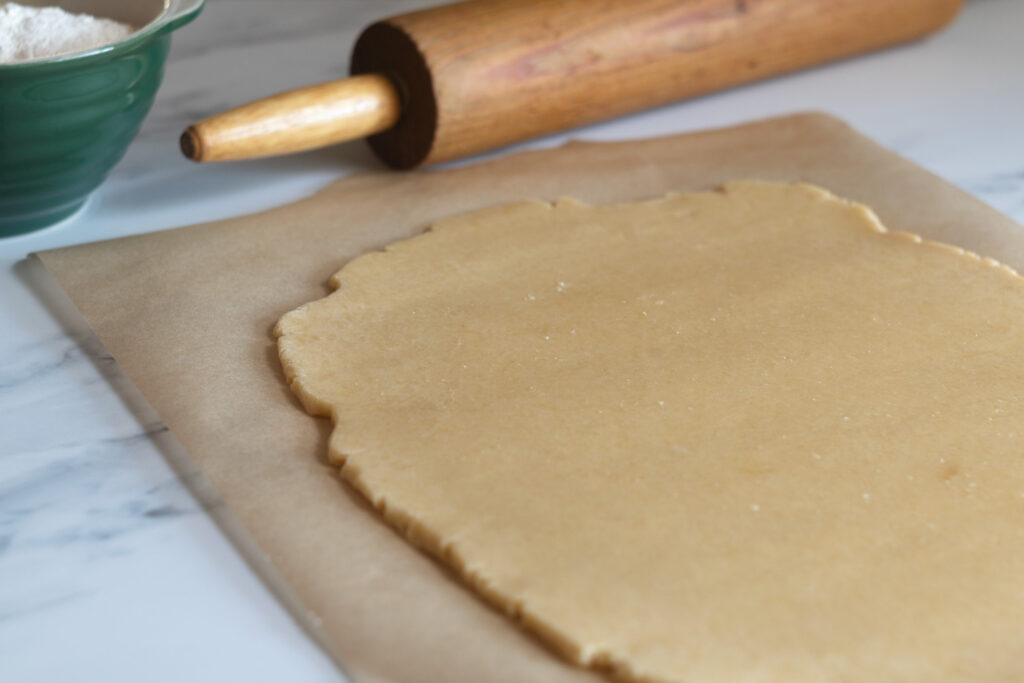
Cut out the cookies using a 2-inch round cookie cutter and transfer to a lined baking sheet, spacing the cookies about 1 inch apart. The scraps can be gathered once to roll and cut out more rounds.
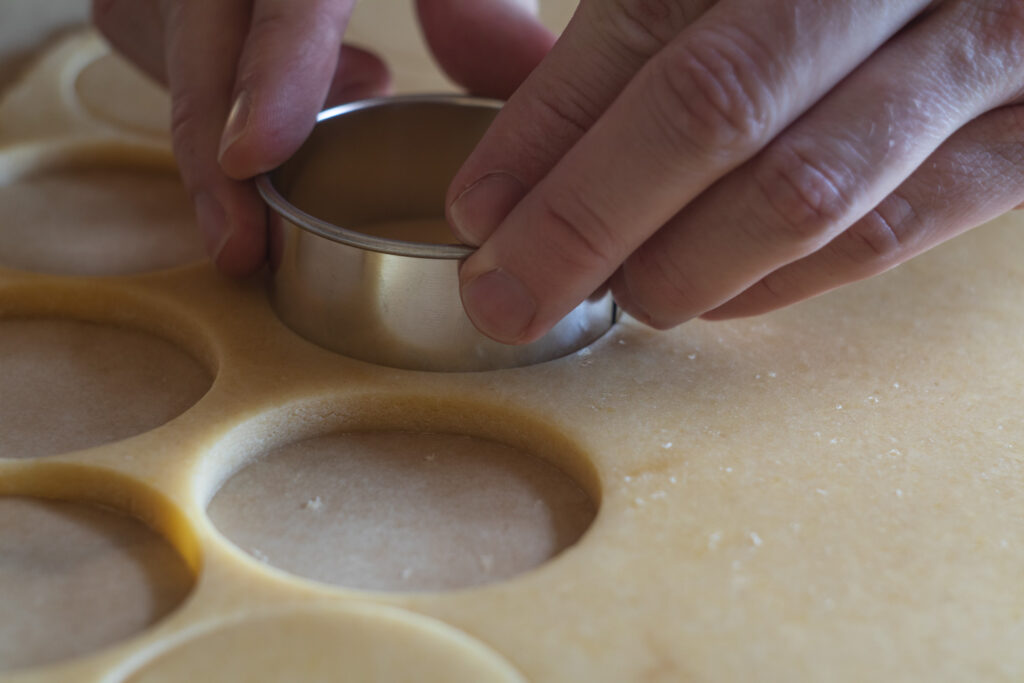
7. Brush the cookies with egg wash:
Beat an egg with a tablespoon of water to make an egg wash. Brush each cookie lightly with the egg wash. Create a crosshatch pattern over the tops of the cookies using the tines of a fork.
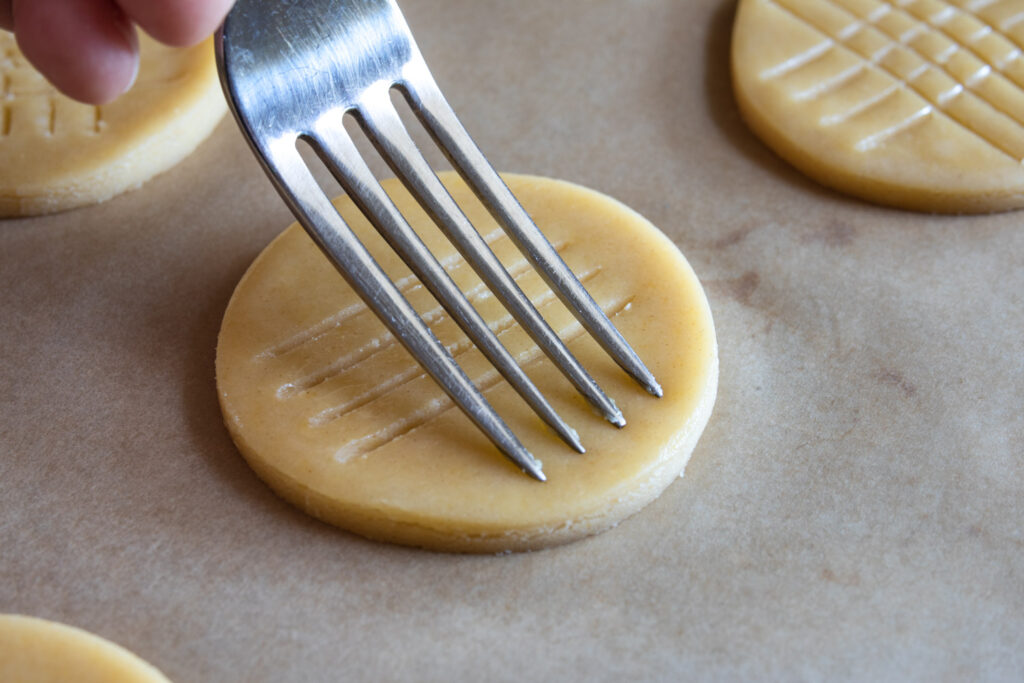
8. Bake
Bake the cookies in the preheated oven for 15 to 20 minutes, or until they are golden brown on the edges and an even light brown color in the center. The baking time will depend on how thick the cookies are.
Storage:
The dough can be double wrapped in plastic and stored in the refrigerator for up to 3 days, or frozen for up to 1 month*.
The baked cookies keep for up to 1 week in an airtight container, or frozen for up to 1 month.
*Note:
To bake from frozen, thaw the dough in the refrigerator. Then, continue from step 5.

No Comments